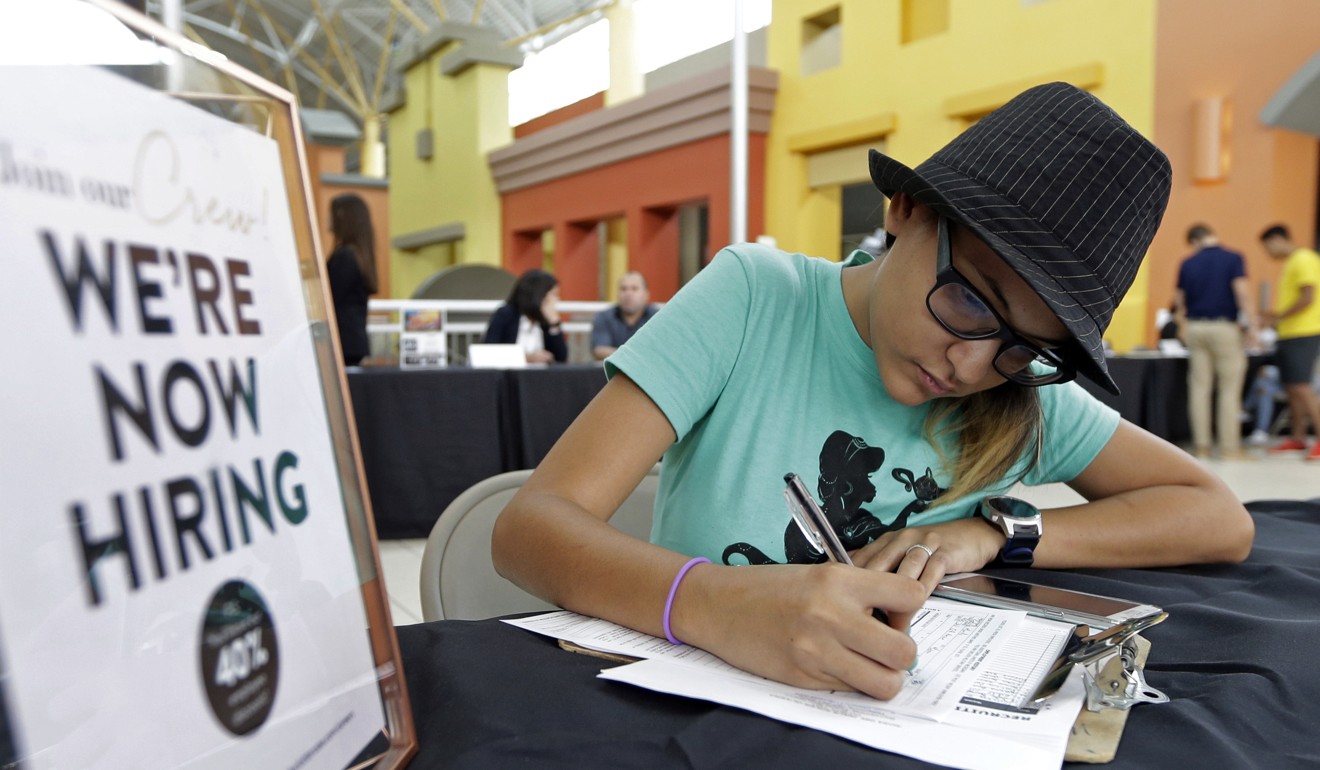
US jobs shrink for first time in seven years as Hurricanes Irma and Harvey pound the economy
Unemployment rate of 4.2 per cent is the lowest since February 2001
US employment fell in September for the first time in seven years as Hurricanes Harvey and Irma left displaced workers temporarily unemployed and delayed hiring, the latest indication that the storms undercut economic activity in the third quarter.
The Labour Department said on Friday non-farm payrolls decreased by 33,000 jobs last month amid a record drop in employment in the leisure and hospitality sector.
The decline in payrolls was the first since September 2010. The Department said its analysis suggested that the net effect of Harvey and Irma, which wreaked havoc in Texas and Florida in late August and early September, was to “reduce the estimate of total non-farm payroll employment for September.”
“While non-farm payrolls declined last month, investors will find solace in a whole host of other labour market indicators that reveal an underlying labour market that continues to show evidence of resilience and continued tightening,” said Scott Anderson, chief US economist at Bank of the West in San Francisco.
Economists had forecast payrolls increasing by 90,000 jobs last month. Payrolls are calculated from a survey of employers, which treats any worker who was not paid for any part of the pay period that includes the 12th of the month as unemployed.
Many of the dislocated people will probably return to work. That, together with rebuilding and clean-up is expected to boost job growth in the coming months. Leisure and hospitality payrolls dived 111,000, the most since records started in 1939, after being unchanged in August.
There were also decreases in retail and manufacturing employment last month. Stripping out the effects of the hurricanes, the labour market remains strong. The government revised data for August to show 169,000 jobs created that month instead of the previously reported 156,000.
Harvey and Irma did not have an impact on the unemployment rate, which fell two-tenths of a percentage point to 4.2 per cent, the lowest since February 2001. The smaller survey of households from which the jobless rate is derived treats a person as employed regardless of whether they missed work during the reference week and were unpaid as result.
The decrease in the unemployment rate reflected a 906,000 surge in household employment, which offset a 575,000 increase in the labour force.
Underscoring the disruptive impact of the hurricanes, the household survey showed 1.5 million people stayed at home in September because of the bad weather, the most since January 1996. About 2.9 million people worked part-time, the largest number since February 2014.

The length of the average workweek was unchanged at 34.4 hours. With the hurricane-driven temporary unemployment concentrated in low-paying industries like retail and leisure and hospitality, average hourly earnings increased 12 cents or 0.5 per cent in September after rising 0.2 per cent in August.
That pushed the annual increase in wages to 2.9 per cent, the largest gain since December 2016, from 2.7 per cent in August.
The mixed employment report should not change views the Federal Reserve will raise interest rates in December. Fed Chair Janet Yellen cautioned last month that the hurricanes could “substantially” weigh on September job growth, but expected the effects would “unwind relatively quickly.”
“The Fed has been hyper-focused on wage growth, so the above-average increase will be a welcome relief, even if there is some storm impact embedded in the number,” said Marvin Loh, senior global markets strategist at BNY Mellon in Boston. “We think that the report strengthens the Fed’s December hike hand.”

